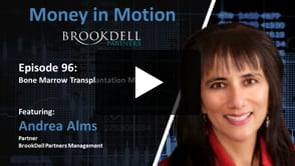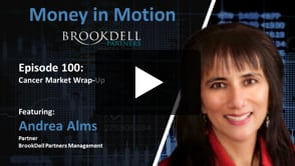Hedge Fund Dashboard:
Top Hedge Fund News, Member Posts, Hedge Fund Daily Indices and more!
Elvis Pellumbi’s CFP Opportunity Fund has been steadily carving its own space within the energy sector since launching in December 2015 – and boosted its credentials by being one of very few energy funds to make money during the October maelstrom.
Pellumbi, who leads London-based CF Partners Capital Management, is portfolio manager and chief investment officer of the flagship $255m strategy, which scored a double-digit gain in its first year of trading, and is up 7.4% so far in 2018.
The fund uses a long/short event-driven investment style, trading equity and credit issued by mid-cap energy-focused companies sized between $500m and $3bn. The investment portfolio is built using a fundamental, bottom-up approach to position selection, with additional top-down macro perspectives on commodity prices.
The strategy diverges from commodities rivals by not being all about predicting the oil price. “We don’t try and predict the oil price, but we certainly have views, and those will drive, on the margin, our portfolio positioning,” Pellumbi says.
-Elvis Pellumbi
The strategy has a global mandate, investing in liquid securities at all levels of the capital structure listed on the London, New York and Oslo stock exchanges, which Pellumbi sees as the three primary markets for energy companies. The portfolio spans the oil, gas and renewables industries, typically consisting of around 20 trades which include subsectors like exploration and production, shipping, rig and drilling names, among others.
“Energy is global. However, you won’t see us invest in emerging market stock exchanges. Despite the fact that there are a lot of energy companies in those exchanges, they’re not liquid enough,” he observes.
A 20-year industry veteran, Pellumbi launched the CFP Opportunity Fund with about $20m, comprising the partners own capital and some friends and family money. The partners have since grown their investment to approximately $40m, representing about 15% of overall assets. The majority of investors in the fund are US-based, comprising a mix of endowments, pension funds, and family offices.
Prior to launching CF Partners, Pellumbi had been a managing partner and CIO at RS Platou, a Norwegian energy and shipping investment manager. When RS Platou was acquired by Clarkson Plc, he transferred the business to CF Partners in the summer 2015, having already established the fund structure and management company.
Before that, he ran a version of the strategy as a sleeve of a larger energy-focused fund at Lombard Odier between 2010 and 2013. It was during his time at Lombard Odier that Pellumbi first developed his focus on energy, having earlier had a more generalist focus at Cerberus European Partners, where he had been a principal, specifically in secondary trading, private equity and direct lending. Before Cerberus, he held sell-side positions at investment banks UBS and ING.
“I don’t believe that a security which has traded cheap, or expensive, for a long time will all of a sudden reprice without a material piece of information coming to light. That’s what we mean by event driven,” he says, adding that capitalising on mispriced securities is central to the fund’s approach.
Events within CFP’s scope vary from soft – such as a major contract win or loss for a company, or a credit upgrade downgrade – to very hard, comprising triggers which Pellumbi says would be impossible for the market to ignore. Examples of these may be company takeovers, refinancings of a bond or a tender offer, or a Chapter 11 filing.
“There is a whole range of events that we try to capture, but they must be material events within a reasonable timeframe – typically three to nine months – which will inform the market that it is wrong in the way that it is pricing the security.”
Price power
While material, fundamental events affecting individual companies form the core of the investment strategy, views on commodities prices also inform the position-building process.
“You don’t make decisions in a vacuum. When you are doing the analysis on the earnings of a particular company, you need to know what the oil price is going to be over the next few years,” he says. “It is a key factor in terms of what drives the revenues and, ultimately, the cashflow generation and profitability of the companies that we invest in.”
- Oil prices have fallen sharply in recent months – the price of Brent crude dipped 9% in October – with several major hedge funds suffering double-digits losses.
But Pellumbi is keen to emphasise that for his fund – which was one of the few energy-focused hedge fund strategies in positive territory in October – the oil price is only part of the story.
“Many investors, especially generalist investors, make the mistake of stopping at the oil price,” he suggests. “The oil price multiplied by the number of barrels gives you the revenue. But then the cost, the debt service, and the capex are the other relevant line items that give you insights into the profitability and the cash flow generation of the sector and a particular company.”
Energy companies must either be in a position to deliver cashflow immediately or have a clear path to sustainable cashflow in the future, he says.
“We have always applied that paradigm to our investing approach – we applied it in ’15, ’16, ’17 and in 2018,” he says. “We have a global mandate. We invest across the board. But right now, we have a preference for international companies especially in the E&P space versus US onshore companies. This is because international companies, the right international companies, are generating cashflow now. US onshore finally has line of sight to generating cashflow and returning capital to shareholders but it’s not there yet.”
There are typically around 20 trades in the portfolio at any one time, usually comprising between 35-45 names. Pellumbi and the team typically pair the longs and shorts by matching the sector and the instrument.
“We therefore may have more than one line item in the same company, and a lower number of longs than shorts, as a way of avoiding event risk on the short side,” he says, adding that while the fund is essentially market neutral, it may take a positive or negative stance on a particular sub-sector.
“For example, we could do a trade involving a credit long and credit short in offshore drillers, or an equity long with an equity short in US onshore E&P. We try to minimalize the basis risk as much as possible.”
The fund generated an 18.8% annual return in 2016, its first full year of trading. In 2017, it was down 4.7%. In 2018, the fund is up 7.4% to the end of October. During the course of this year, the portfolio has become more concentrated in fewer positions, an intentional move which Pellumbi says was made to try and curb the impact of capital markets on the fund.
“Our longs have very strong cash generation, and we have increased concentration in companies where we expect positive events or negative events to happen in the shorter term,” Pellumbi says. “We have trades in the book that arise out of our own work.”
Themes and trades
Genel Energy, a London-listed E&P company whose operations are focused on Iraqi Kurdistan, is one such position that has helped drive the fund’s returns lately. Genel has a single piece of debt – a $300m bond – with more than $300m in cash on its balance sheet, with low production costs overall. The company is in talks with the Kurdistan regional government on several projects, which Pellumbi believes will help shape the company’s capex plans for the next year or two, in turn providing visibility on cashflow.
“There are a few very positive triggers that are coming up in terms of additional projects and approvals which will increase the NAV and allow them to generate additional cashflow. The company’s net debt is negative, and they are generating significant cashflow every month after capex and after tax,” he explains. “If Genel starts paying a dividend, then the investment thesis becomes a yield play, rather than an NAV play, which is what we want.
“Genel ultimately controls its own destiny. Compare that to a US onshore company that is not going to be cash positive for another 18 months. You can’t have a discussion about dividends there because there isn’t going to be any cashflows – they’re going to be burning cash.”
CFP is also zeroing in on niche opportunities within US shipping, as well as increased demand for liquified natural gas in South-East Asia.
A section of the 1920 US Merchant Marine Act known as the Jones Act requires goods that are transported by water between US ports to be carried by American vessels that are manufactured and owned by US entities and operated by citizens of the country.
Pellumbi estimates that around half of the Jones Act fleet serves as a pipeline to transport gasoline and diesel from the Gulf Coast refineries to Florida. Demand for Jones Act tankers is being ramped up by the need to transport crude barrels from the Gulf Coast to the east coast refineries, around Delaware Bay.
“There are no new vessels being built for this market, and since the US Navy has commissioned so much work from the US shipyards, there are no shipyard slots available until around 2023. That’s fairly unusual for shipping,” Pellumbi explains. “Under the Jones Act, you can’t manufacture these vessels overseas – they must be built in the US. About 25% of the fleet is over 35 years old, and is heading into the scrapyards gradually. Ship supply is dropping within the Jones Act segment of the market at the same time as the demand is going up.”
Increases in US onshore production has made oil from the Permian cheaper than Angolan and Nigerian barrels and that means more US barrels are being transported to the US east coast.
“The east coast refiners are buying significantly more volumes from the Gulf Coast – and they have to use these Jones Act tankers in transport at a time when supply is shrinking. So the day rates for these tankers are going up,” Pellumbi explains.
Overseas Shipholding Group and American Shipping Company ASA are two companies that will benefit from these developments.
Pellumbi also predicts global gas consumption will grow at twice the rate of oil for the foreseeable future, aided by the drive for cleaner air in South-East Asia, where there has been a spike in demand for liquefied natural gas imports across Korea, Japan, India and China. That has formed the basis for another key idea in the fund, based around LNG shipping companies.
“It is a subsector of shipping, and requires significant capital investment,” Pellumbi says. “There is a two-year lead time to build one of these vessels, which cost about $200m each to build, and they can only be built in Japan and Korea, who don’t give the same credit terms as China.”
Outlining the position theme, Pellumbi observes that gas is used mainly for heating in the northern hemisphere, with day rates for LNG shipping peaking during the winter.
“In 2016, the winter rates in December were about $45,000 a day. In 2017, they were at $90,000 a day in December. By November 2018, we have seen fixtures in excess of $200,000 a day. Those rates are for the same vessels and the same operating costs. It’s just that the price they can get for these vessels in a very tight market is significantly higher.
“The profitability of these carriers is significantly higher than what people were expecting. Demand is becoming significantly stronger, and supply is limited.”
Maintaining an edge
Reflecting on his 20-year career path, Pellumbi believes his shift towards a sector-specific focus has allowed him to delve deeper into potential ideas and themes, and further carve out his own investment niche within the broader energy hedge fund sector.
“We spend so much more time than someone who is a generalist, who only occasionally looks at the commodities space, and that edge grows the longer we keep doing this,” he says. “Within energy, what differentiates us is the ability to invest across the capital structure, which I believe gives us an edge in terms of finding better risk reward, depending on market conditions.”
While certain other oil-focused hedge funds have notched up eye-catching gains over the years by trading commodities directly, Pellumbi remains steadfast in his own approach to investing, and in his focus on energy-related securities.
“There are funds which invest in both the securities and in the commodity itself. Some of those other commodity funds are extremely volatile,” he observes. “We’ve seen some spectacular failures where you are mixing those two types of risk. They’re very, very different markets and very different risk. I don’t want to mix the two.”
Casting a broader view over the energy markets, Pellumbi believes that investors’ enthusiasm for commodities is often highly correlated to the price of oil.
“I’ve met with some investors in some other hedge funds who are happy with the fact that they can withstand the volatility because they know they can make money over the medium-term, he reveals. “I’ll increase my beta if I think the oil price is going up and I will lower my beta if I believe the oil price is going down. But for us it’s more of a technical consideration.
“With CFP, not only have we done what we said we would do, but also we are fairly unique in terms of being up for the year in energy. What we try to do is deliver consistent returns without taking volatility bets.”
Black gold on EuroHedge.
Today's Hedge Fund Headlines:
Access Over 250K+ Industry Headlines, Posts and Updates
Join AlphaMaven
The Premier Alternative Investment
Research and Due Diligence Platform for Investors
Free Membership for Qualified Investors and Industry Participants
- Easily Customize Content to Match Your Investment Preferences
- Breaking News 24/7/365
- Daily Newsletter & Indices
- Alternative Investment Listings & LeaderBoards
- Industry Research, Due Diligence, Videos, Webinars, Events, Press Releases, Market Commentary, Newsletters, Fact Sheets, Presentations, Investment Mandates, Video PitchBooks & More!
- Company Directory
- Contact Directory
- Member Posts & Publications
- Alpha University Video Series to Expand Investor Knowledge
- AUM Accelerator Program (designed for investment managers)
- Over 450K+ Industry Headlines, Posts and Updates








